|
|
本帖最後由 dyw6969 於 2021-10-4 15:33 編輯
Sharing my DIY music server experience over the last year with this CAS community... Like many others fans interested in CAS I've been looking to make my own DIY music server with the goal to get the best audio quality for a modest budget. The objective was to have a single box solution with the flexibility to stream from Tidal, Qobuz and play my own ripped FLAC and DSD music collection that is stored on a Synology NAS. I started with a 10i7 based NUC and installed ROCK (Roon Optimised Roon Kit), connected with a Oyaide USB to my Marantz SA KI Ruby but being rather underwhelmed with the outcome I looked into other Linux based OS for music playback and various hardware tweaks. Don't get me wrong the DIY Roon Core option was already a much better sound than running Roon Core from a MacBook Pro laptop, I felt there was much room for improvement ...
I read on various forums that using Linear Power Supply instead of original power supply can make a huge difference in the sound quality... resulting in less interference noise, more relaxed sound, better detail, better controlled bass, etc. So I was recommended by a friend to try the Taiwanese based Keces. I purchased a single rail P8 12V 8A LPS from the local distributor to power my DS218Play Synology NAS (need 6A to power up) and used the remaining 5V USB output to power a Linger Audio 5 port TCXO Switch. I also made my own Cat 7 cables from Viablu EP7S cables with Telegartner plugs. I also upgraded the Oyaide Class S USB cable with a New Zealand based brand Mad Scientist Audio called Black Magic. Day and night difference... there is some "real" magic going on with this cable and is vastly underrated. It's a very resolving cable but manages to tame the high frequency giving you a nice liquid detail but good body and extension both in lows and highs without introducing any harshness.
Many suggested to put the 10i7 in a fan-less case and also power it with a LPS. So I got hold of a HDPlex H1.TODD V3 fan-less case with the NUC adapter kit. The 10i7 NUC needs 19V, so I got another Keces P8, this time a single rail 19V 8A. The additions of the LPS with the fan-less case gave me better result but still limited sound tweaking possibilities in ROCK. So I started looking at other linux based OS options that are tuned specifically for CAS based music playback. I discovered AudioLinux and Euphony as the most popular ones as alternative to Roon's optimised core kit. AudioLinux was a nice step up but like everyone looking for the ultimate I still wanted to try Euphony as a standalone solution. Euphony offers many audio systems setups, use as Roon core, Roon Core + HQPlayer, Roon core + Squeezelite, or its own StylusEP or even Roon Bridge, Airplay audio server etc.

Many fans using Euphony recommended using it in a single box solution running just Stylus opting for its own Euphony Audio Transport, but if wished still have the option to use HQPlayer for upsampling. My Marantz SA KI Ruby already upsamples all signals to DSD so I prefer to disable HQPlayer upsampling.
The 10i7 NUC uses M.2 NMVE SSD drives, I have used many different brands to try which is most satisfying and have finally found the best option giving the most satisfying results. My first M.2 drive as per recommendations when I got the 10i7NUC was a Samsung 970 EVO plus... after 3 months of use I swapped for an Optane M.2 SSD since many experienced better bass control (less bloated and leaner deeper lows) and a more dynamic sound however at the cost of more losing micro detail in the high frequencies. Then I discovered a Taiwanese company offering a Femto clock based M.2 drive with the option to use external power supply. I was happy and honoured to be able to participate in testing out this Revelation Audio SSD drive.
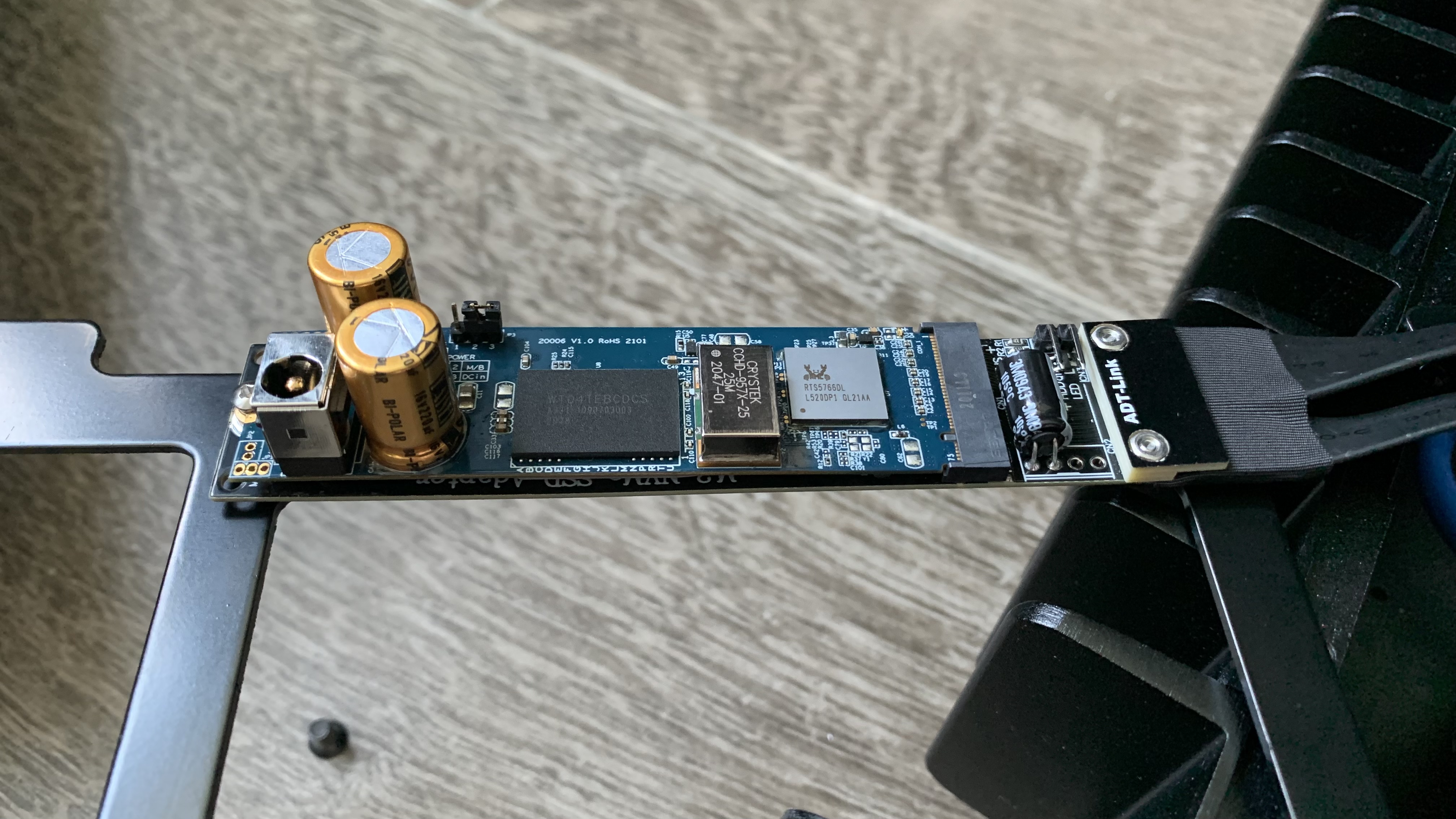
The drive isn't cheap coming at a retail price of USD699 but the sound running any OS on this drive is on whole different league. Many other manufactures also offer Femto based upgrades such as audiograde switch and USB cards, all are in the same price range so no surprise there.
The creator of the Revelation Audio Femto M.2 drive recommends 5V 2.5A and also happens to suggest the Keces P3 as his favourite LPS but of course this is all a matter of taste, since different LPS will sound somewhat different in terms of character, dymanics, rhythm and pace. Since I already use the P8 for me it was a no brainer to opt for Keces again, even though I tried some Chinese and Singapore made LPS such as the well known Plixir brand. In the end after testing I did prefer the Keces P3 in my setup as there seems to be nice synergy.
Being curious to know if an external LPS powered drive could make such a difference I installed in the fan-less case using an ADT-Link branded M.2 extender and running first powered by the motherboard. There is a jumper that lets you choose to power from internal motherboard or from an external source. From the photos below it will become clear that there wasn’t enough clearance to install the Femto M.2 drive directly into the motherboard of the NUC since it sits upside down in the HDPlex fan-less case. Reason being that the NUC’s processor faces up so that the cooling heat sink diverts the heat towards the sides of the case.
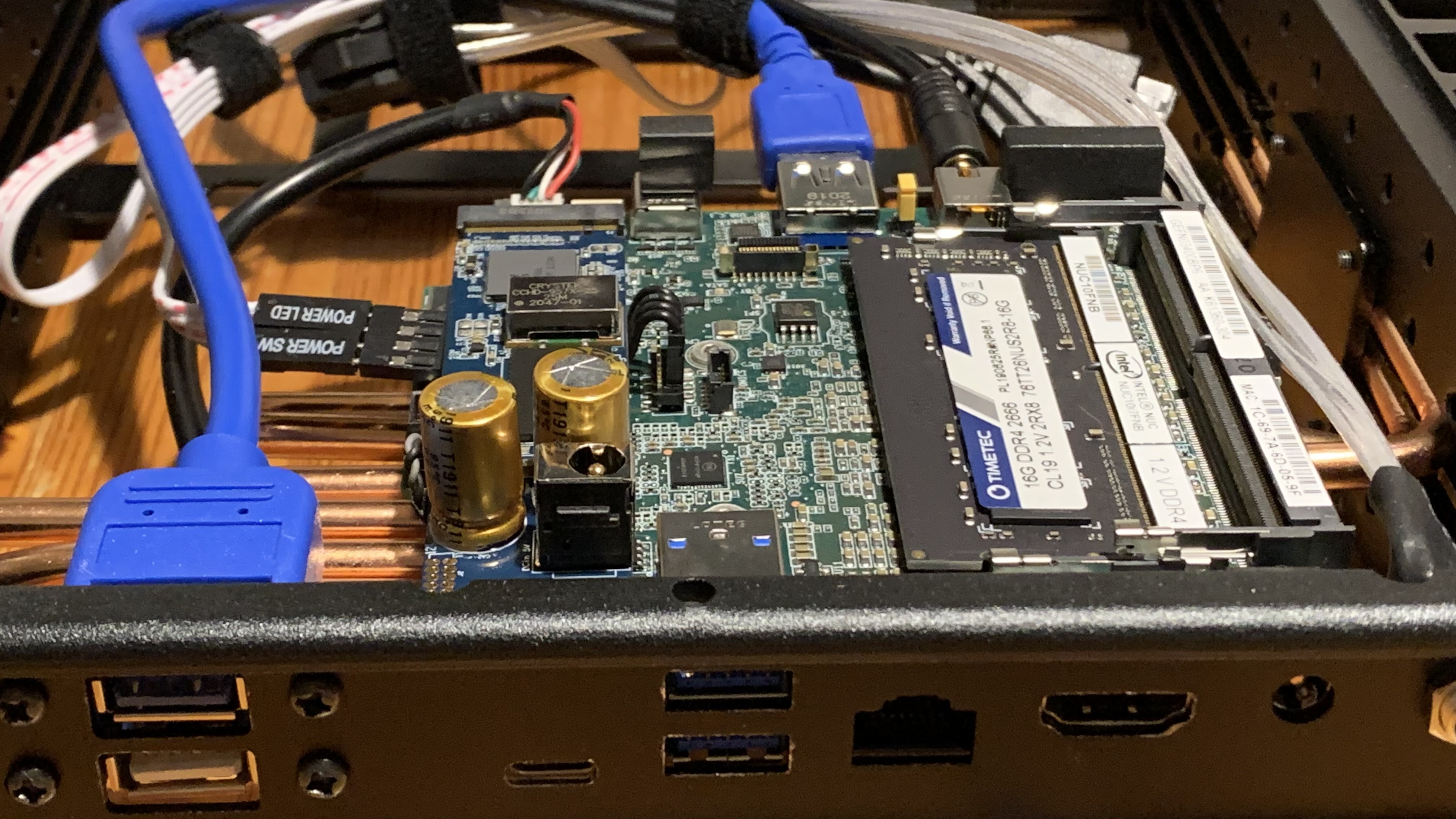

After 100 hours I switched from internal power to the Keces P3 LPS which is also still running in as we speak and it's using the standard fuse so I may upgrade that later too...

Revelation Audio Femto M.2 drive mounted with isolating double sided tape onto the riser, enough clearance for the power DC connector and in this position away from the heatsink. Note the angled Oyaide connector to supply 5V from the Keces P3.
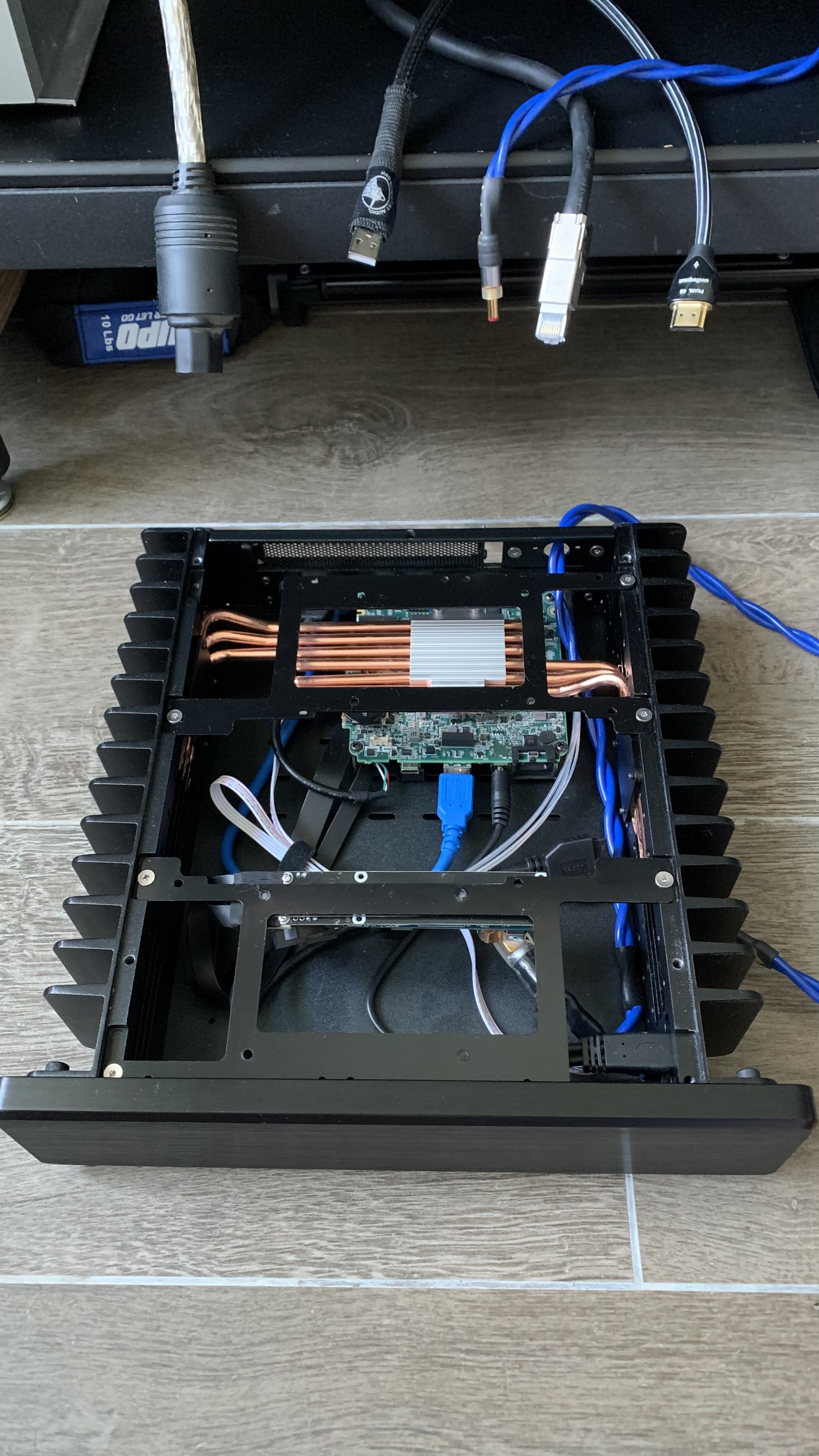
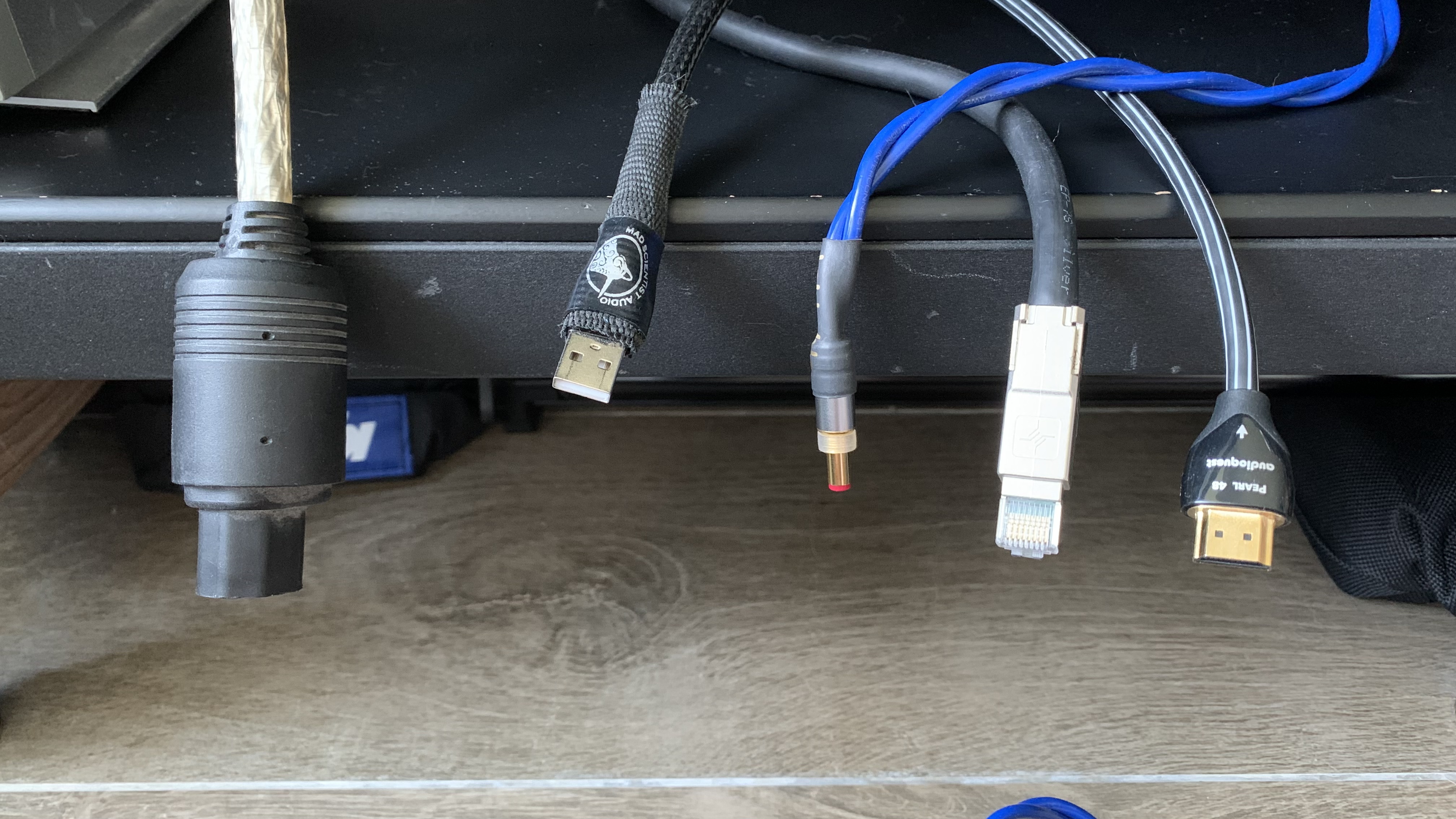
From left to right : IEC power cable for Keces P3, Mad Scientist Audio USB to USB-B (connecting USB from the NUC to my Marantz SA KI-Ruby SACD / DAC streamer, DIY Viablue + Telegartner Cat 7, AudioQuest Pearl 48 HDMI
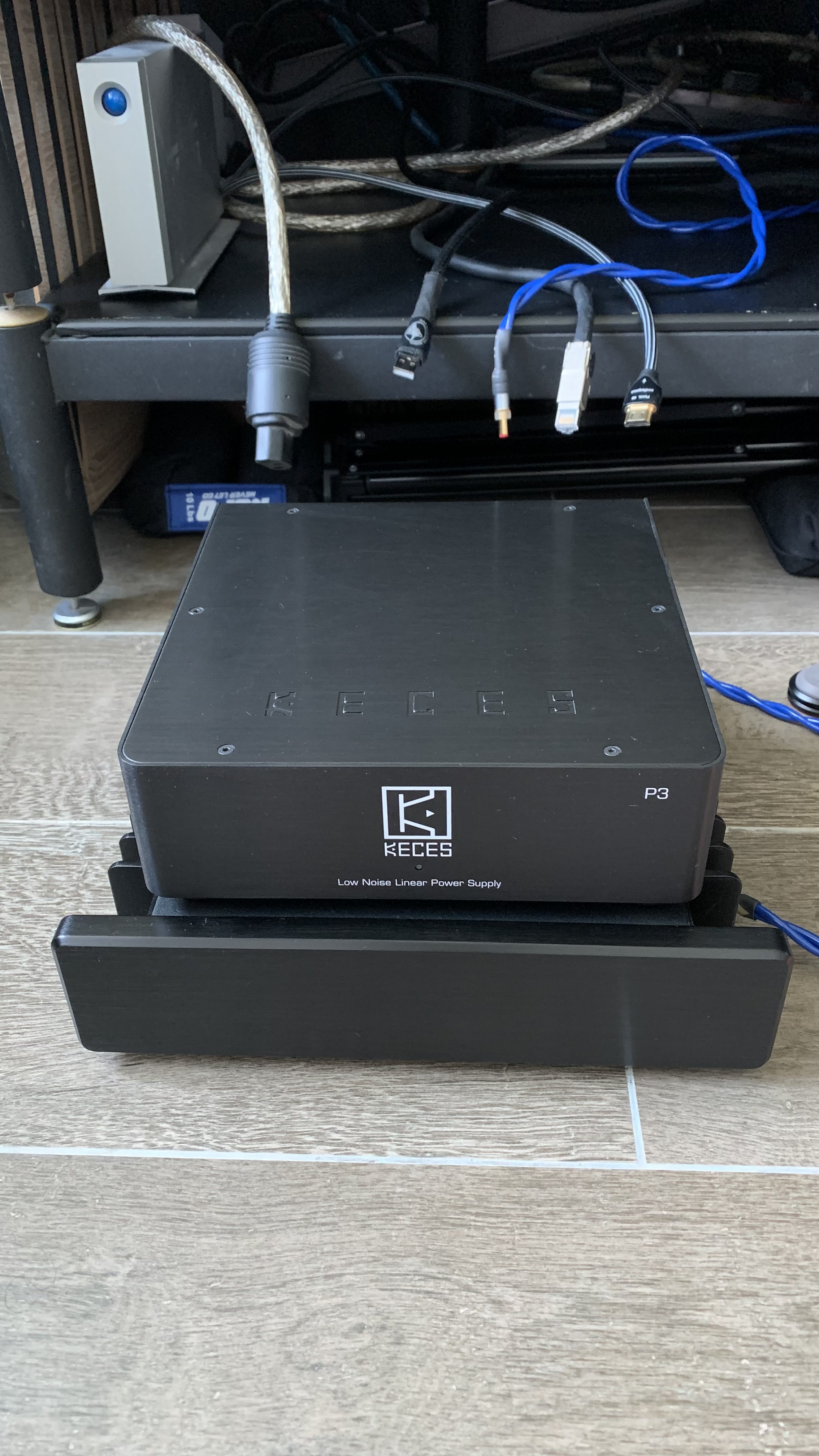
After 200 hours of running I very much liked what I was hearing! Swapping from mobo power to external LPS is indeed a major step up. Even quieter background but the biggest difference is a big increase in dynamics, more body, better controlled (tighter) bass, and more air around individual instruments and vocals with better detail again. I thought my system running Euphony's Stylus was very good already but I'm hearing new things I haven't heard in very familiar recordings, with an even wider sound stage. Vocals and string instruments sound very life like. You get the impression that the band performs right in your listening space, your personal concert. You can hear each instrument has it's place in the sound stage and you can clearly notice the air and reverberation of the elements individually in the room it was recorded ... a very three dimensional sound stage with expanded width and depth.
Very intoxicating :)
Then there was a bit of high frequency roll off that started to manifest after 250 hours or so and I wondered what changed ... I did a full reset of the Euphony software now running at v 3.20210716. I did try running in Ramroot as this does make a difference with the ROCK software and with AudioLinux, but this made my system sound too compressed with a loss of micro detail and loss of air in the mix. Having rebooted without Ramroot and tweaked the processor in the Euphony system settings to run at a lower frequency (1.1GHz instead of the standard 4,7 GHz) gave me back the detail I lost. I kept running the system by looping some albums 24 hrs during the weekdays... I have 350 + hours now and happy to report the sound keeps improving.
I will be very difficult to go back to using the other drives now that I have been "poisoned" by this very sweet and nice sound...
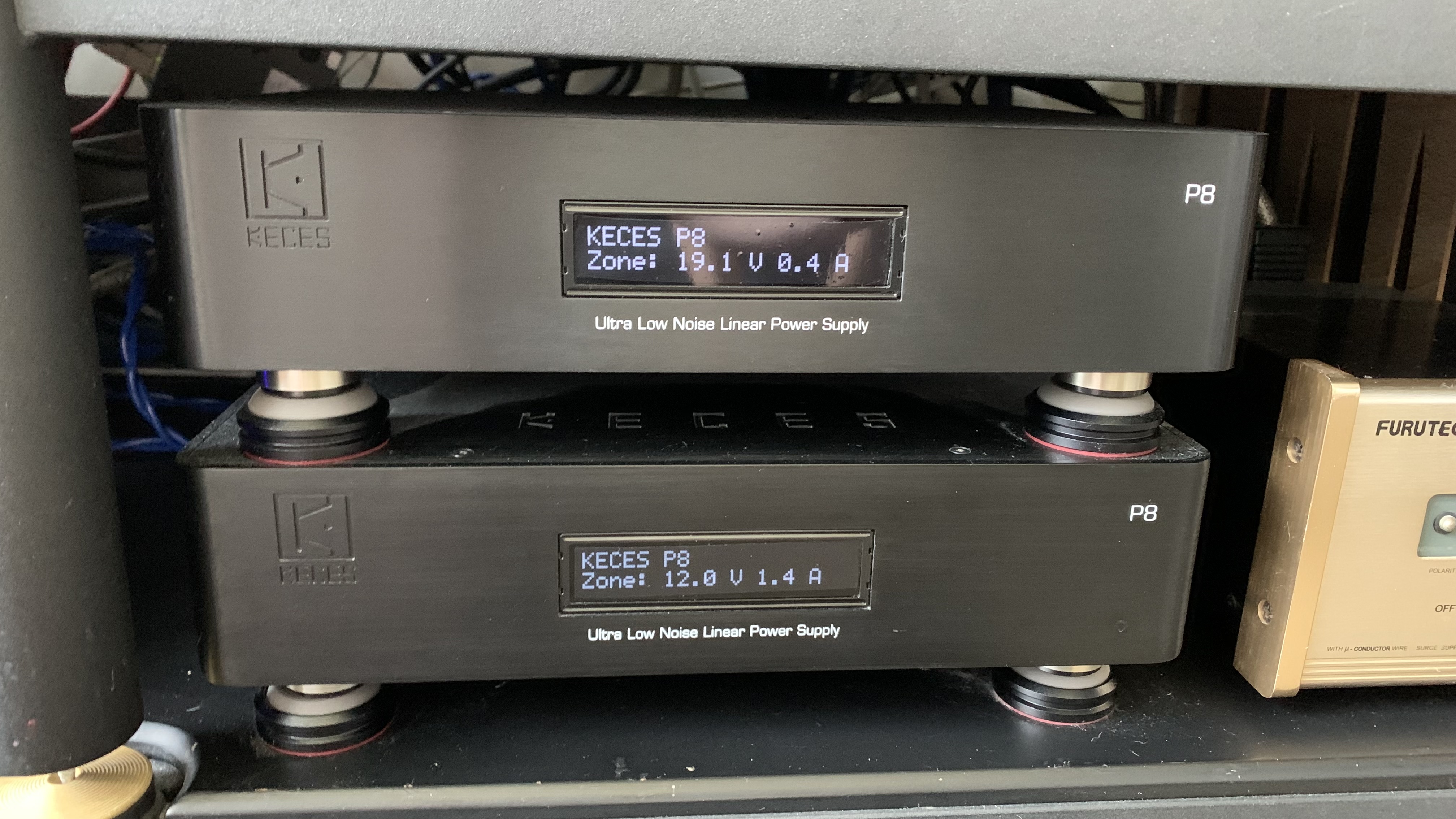
Keces P8 (19V and 12V) powering NAS, 10i7NUC and Linger Audio switch (all purchased from Labkable HK)
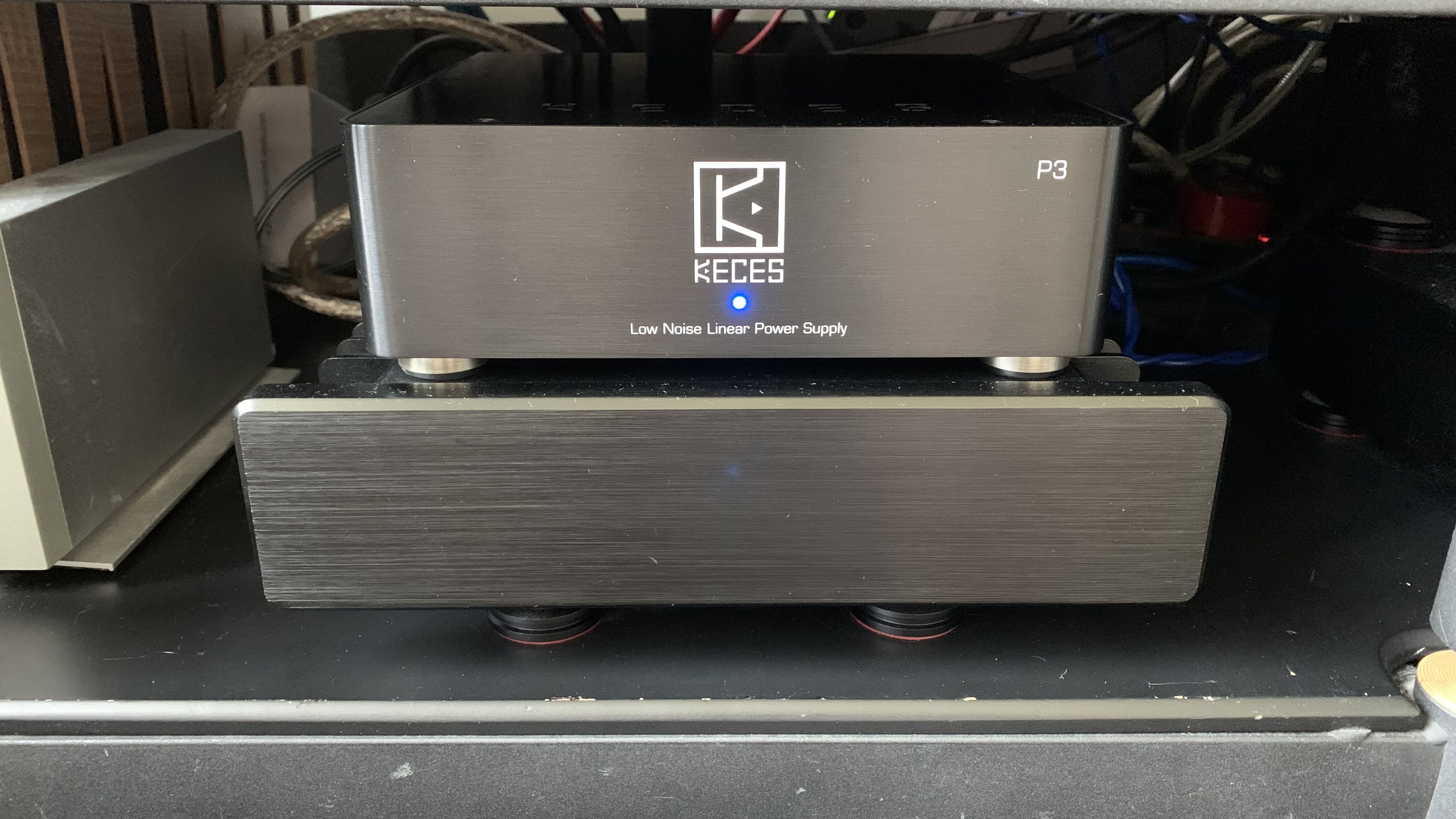
Keces P3 on top of the HKPlex fan-less case
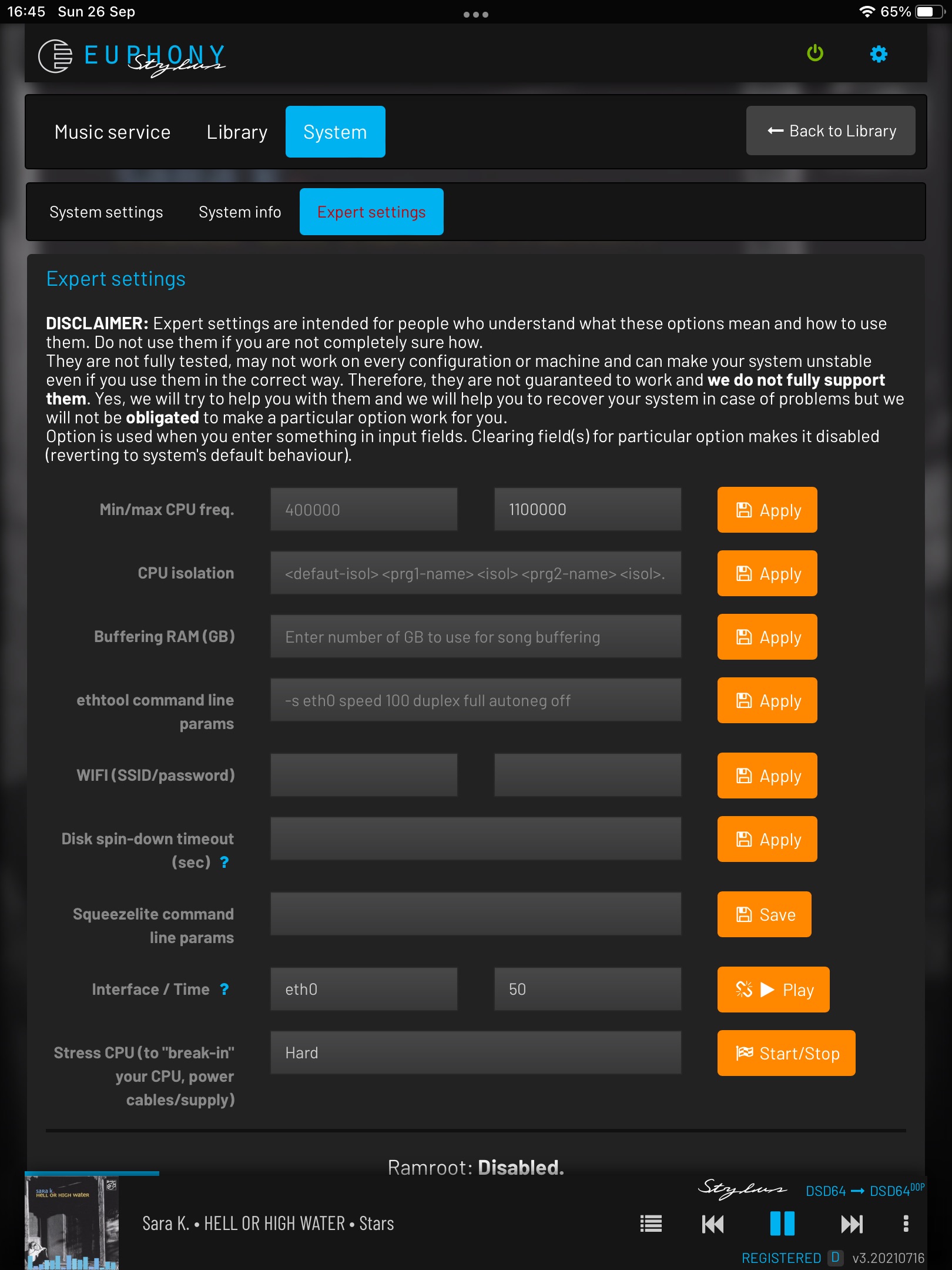
Euphony V3.20210716 without Ramroot, cashing to M.2 system drive enabled.
Streaming music from Qobuz, Tidal and from my Synology NAS.
Lastly, a screen grab of the iPad OS control app Euphony Stylus, not as user friendly as the Roon app perhaps but the UI is straightforward and there is a low learning curve... the sound improvements are worth the UI sacrifice. |
-
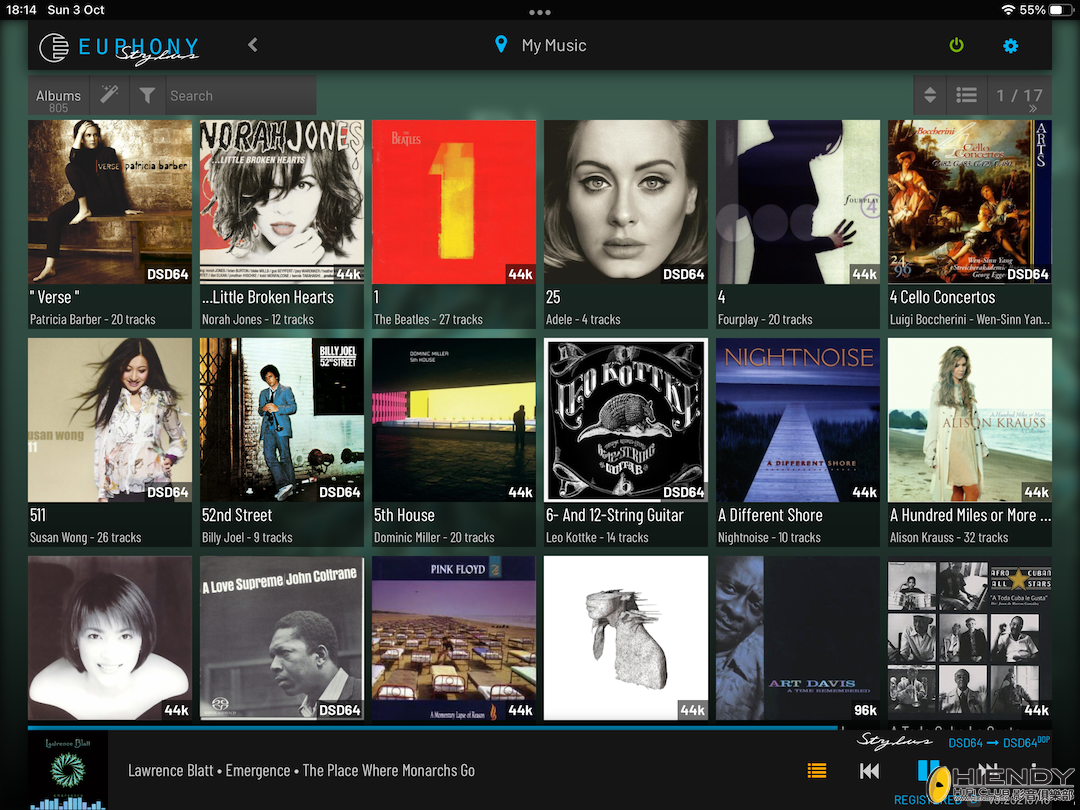
評分
-
5
查看全部評分
-
|